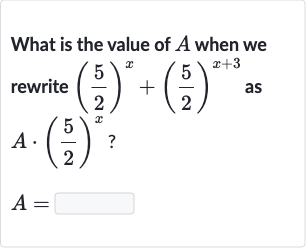AI tutor
Full solution
Q. What is the value of when we rewrite as A. ?
- Factor out common term: Question_prompt: What is the value of when we rewrite as ?
- Calculate exponent: First, let's factor out from both terms.
- Substitute back: Now, calculate .
- Add fractions: Substitute back into the factored expression.
- Find final value: Add to to get a common denominator.
- Find final value: Add to to get a common denominator. Now, we have as .
More problems from Compare linear and exponential growth
QuestionGet tutor help
QuestionGet tutor help
QuestionGet tutor help
QuestionGet tutor help
QuestionGet tutor help
QuestionGet tutor help
QuestionGet tutor help

